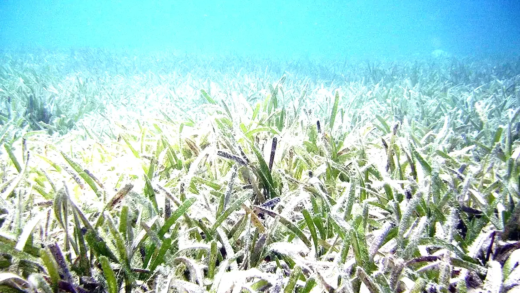This article explores the fascinating dynamics between snakes and their predators. It covers the various hunters of snakes, including birds of prey and larger mammals, as well as the unique defensive strategies snakes employ to protect themselves. The article also discusses the threats snakes face due to human activities and climate change, emphasizing the importance of conservation efforts.
Birds of Prey: Masters of the Sky
Predators of snakes include various birds of prey. These magnificent hunters, like hawks and eagles, have evolved unique techniques to catch their slippery prey. Their keen eyesight allows them to spot snakes from great heights, sometimes even while soaring high in the sky. When they dive down, they can reach speeds of up to 150 miles per hour, making them formidable hunters.
One notable technique employed by birds of prey is the silent approach. They glide silently, minimizing noise to avoid alerting the snake. Once they are close enough, they use their sharp talons to snatch the snake from the ground or branches. Some birds even use a strategy of distraction; they might create a diversion to confuse the snake before making their move.
Additionally, certain species, like the Osprey, have adapted to hunting snakes by specializing in fishing techniques that can be applied to catching snakes in water. This adaptability highlights the versatility of birds of prey in their hunting strategies.
In summary, birds of prey are highly skilled hunters of snakes, utilizing a combination of keen senses, stealth, and speed to catch them effectively.
Larger Mammals: The Ground Predators
Larger mammals also play a significant role in the predator-prey dynamic involving snakes. Species such as raccoons, foxes, and even wild boars have been known to eat snakes. These ground predators utilize their strength and cunning to hunt down their prey.
For example, raccoons are highly adaptable creatures. They often hunt snakes by flipping rocks or debris to flush them out. Their dexterous paws allow them to manipulate their environment effectively. Similarly, foxes use their keen sense of hearing to detect snakes hidden in the grass or underbrush, pouncing swiftly to capture their meal.
Another notable predator is the wild boar. With their powerful snouts, they can root through the undergrowth and uncover snakes hiding in their habitats. This behavior not only provides food but also helps to maintain ecological balance.
In conclusion, larger mammals are crucial predators of snakes, employing various techniques to hunt and consume them, showcasing the diverse strategies found in nature.
Snake-eating Snakes: A Curious Case
Interestingly, some snakes are themselves predators of other snakes. This phenomenon is known as ophiophagy, and it highlights the complexity of the food chain. Species such as the king snake and the indigo snake are well-known for their snake-eating habits.
King snakes, for example, are immune to the venom of many poisonous snakes, allowing them to hunt and consume these dangerous species. They are opportunistic feeders, often preying on smaller snakes, which makes them effective at controlling snake populations in their habitats.
Moreover, the indigo snake is known for its impressive size and strength, allowing it to overpower larger snakes. This adaptability in diet enables these species to thrive in various environments, showcasing the intricate balance of predator and prey.
In summary, snake-eating snakes exemplify a fascinating aspect of nature where even predators must watch their backs. They play a vital role in maintaining the ecological balance.
Techniques of the Hunt: How Predators Catch Snakes
Predators of snakes employ various techniques tailored to their hunting styles. Each species has developed unique methods to catch these elusive reptiles. For instance, birds of prey often rely on their exceptional eyesight and speed. They can swoop down from the sky to catch snakes off guard.
On the ground, mammals like foxes utilize stealth and keen senses to locate their prey. They might listen for the telltale rustle of a snake moving through the underbrush, allowing them to strike with precision. Additionally, some mammals, such as the wild boar, use brute force to uncover snakes hiding in dense vegetation.
Another notable technique is the ambush. Some snakes, like the Gaboon viper, rely on this method, lying in wait for unsuspecting prey to come close before striking with lightning speed.
In conclusion, the techniques used by predators to catch snakes are as diverse as the predators themselves, showcasing the intricate dynamics of predator-prey interactions.
Vulnerable Habitats: Where Snakes Are at Risk
Snakes are vulnerable in specific habitats where their chances of survival are diminished due to the presence of various predators. For instance, in open grasslands, snakes are easily spotted by birds of prey that soar overhead. Similarly, dense forests can be a double-edged sword; while they provide cover, they also harbor ground predators like foxes and raccoons.
Wetlands are another critical habitat where snakes face risks. Waterfowl and other predators often hunt in these areas, making snakes an easy target. Moreover, urban environments pose significant threats, as human activities disrupt natural habitats and introduce new predators.
In summary, understanding the habitats where snakes are most vulnerable is crucial for conservation efforts. Protecting these environments can help ensure the survival of both snakes and their predators.
Defensive Strategies: How Snakes Protect Themselves
Snakes employ various defensive strategies to protect themselves from predators. One of the most well-known mechanisms is camouflage. Many species have skin patterns that blend seamlessly into their environment, making them difficult to spot. For instance, the Eastern Diamondback Rattlesnake has a pattern that mimics the forest floor, allowing it to remain unnoticed.
Another significant defense mechanism is venom. While not all snakes are venomous, those that are, like cobras and vipers, can deter or incapacitate potential threats. Their venom can be lethal to smaller mammals and can cause significant pain or even death to larger predators.
- Fleeing: When threatened, many snakes will opt to escape rather than confront a predator.
- Defensive Postures: Some species display warning signals, such as puffing up their bodies or rattling their tails to signal danger.
- Playing Dead: A few species, like the Hognose Snake, will feign death when threatened, making them less appealing to predators.
In summary, snakes utilize a combination of camouflage, venom, and various behavioral strategies to protect themselves from predators, showcasing their adaptability in the wild.
Ecological Role: Snakes in the Ecosystem
Snakes play a crucial role in maintaining ecological balance. As both predators and prey, they contribute significantly to the food web. Snakes help control the populations of their prey, such as rodents and insects, which can prevent overpopulation and related ecological issues.
Moreover, snakes serve as a food source for various animals, including birds of prey, larger mammals, and even other snakes. Their presence in the ecosystem promotes biodiversity and supports the health of their habitats.
- Population Control: By preying on rodents, snakes help regulate their numbers, preventing crop damage and disease spread.
- Indicator Species: Snakes can indicate the health of their environment. A decline in snake populations may signal ecological problems.
- Soil Health: The decomposition of snake remains contributes nutrients back to the soil, enhancing its fertility.
In conclusion, snakes are integral to ecosystem dynamics, influencing both prey populations and the overall health of their habitats.
Interesting Facts: The World of Snake-Eating Animals
Many animals eat snakes, showcasing the complexity of predator-prey relationships in nature. For example, the Secretary Bird is renowned for its ability to hunt and kill snakes, often using its long legs to stomp on them before consumption.
Another fascinating snake predator is the mongoose. Mongooses are known for their agility and speed, allowing them to dodge venomous strikes while attacking their prey. Interestingly, they possess a natural resistance to snake venom, making them formidable hunters.
- Ospreys: As previously mentioned, these birds have adapted fishing techniques to catch snakes.
- King Snakes: Known for their ophiophagy, they consume other snakes, including venomous species.
- Monitor Lizards: These reptiles are opportunistic feeders, often preying on smaller snakes.
In summary, the world of snake-eating animals is diverse and fascinating, highlighting the intricate relationships within ecosystems.
Human Impact: How We Affect Snake Populations
Human activities significantly impact snake populations and their habitats. Urbanization, agriculture, and pollution have led to habitat destruction, making snakes more vulnerable to predators.
Additionally, the illegal wildlife trade poses a severe threat to many snake species, leading to declines in their populations. Misunderstandings about snakes often result in persecution, further endangering them.
- Habitat Loss: Deforestation and urban expansion reduce available habitats for snakes.
- Pollution: Chemicals can contaminate food sources, affecting snake health.
- Conservation Efforts: Raising awareness and implementing protective measures are essential for snake survival.
In conclusion, human impact on snake populations is profound, and understanding these effects is critical for conservation efforts.
Interactions in Nature: Predators and Prey
Snake predators and their prey interact in complex and fascinating ways. Predators such as birds of prey, mammals, and even other snakes have developed unique strategies to hunt and consume their snake prey. These interactions are crucial for maintaining ecological balance.
Predators utilize various techniques to catch snakes, such as camouflage, speed, and stealth. For example, birds of prey, like eagles, can spot snakes from high above due to their exceptional vision. They swoop down with incredible speed, sometimes reaching up to 150 miles per hour, to catch snakes off guard.
On the other hand, snakes have evolved multiple defense mechanisms to survive these predatory encounters. They often rely on camouflage to blend into their environment, making it difficult for predators to locate them. Additionally, some snakes exhibit defensive behaviors, such as puffing up their bodies or rattling their tails to signal danger.
Ultimately, these predator-prey interactions create a dynamic system where both predators and snakes adapt to each other’s strategies. This ongoing dance of survival contributes to the rich tapestry of life in various ecosystems.
Future of Snakes: Conservation and Threats
Snake populations face numerous threats that jeopardize their survival. Habitat destruction due to urbanization, agriculture, and deforestation has significantly reduced the natural environments where snakes thrive. These activities not only eliminate vital habitats but also expose snakes to increased predation.
Additionally, climate change poses a severe risk, altering habitats and food availability for snakes. Rising temperatures can disrupt breeding patterns and reduce prey populations, further threatening their survival.
Conservation efforts are essential to protect snake populations. Initiatives include habitat restoration, creating wildlife corridors, and raising public awareness about the ecological importance of snakes. Implementing regulations to curb illegal wildlife trade is also crucial in preserving snake diversity.
By understanding and addressing these threats, we can ensure a future where snakes continue to play their vital role in ecosystems, benefiting both the environment and human society.
Conclusion: The Circle of Life
The intricate relationship between snakes and their predators illustrates the delicate balance of nature. Snakes serve as both predators and prey, contributing to the overall health of ecosystems. Understanding the dynamics of these interactions highlights the importance of conserving snake populations and their habitats.
Through efforts to protect these reptiles, we safeguard not only their future but also the biodiversity of the ecosystems they inhabit. The survival of snakes reflects the health of the environment, making their conservation vital for maintaining ecological balance.





Comments are closed.